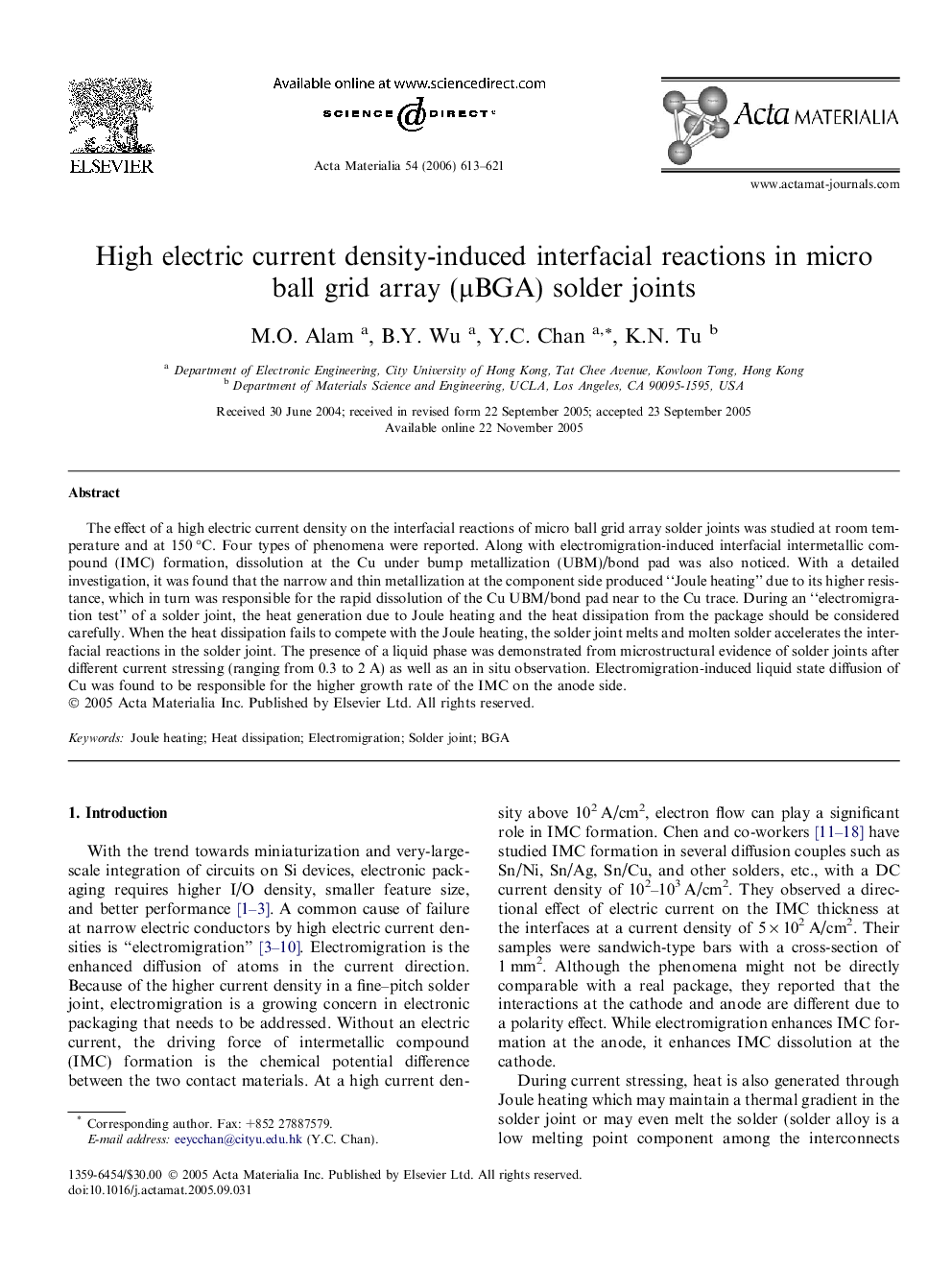| Article ID | Journal | Published Year | Pages | File Type |
|---|---|---|---|---|
| 1450528 | Acta Materialia | 2006 | 9 Pages |
The effect of a high electric current density on the interfacial reactions of micro ball grid array solder joints was studied at room temperature and at 150 °C. Four types of phenomena were reported. Along with electromigration-induced interfacial intermetallic compound (IMC) formation, dissolution at the Cu under bump metallization (UBM)/bond pad was also noticed. With a detailed investigation, it was found that the narrow and thin metallization at the component side produced “Joule heating” due to its higher resistance, which in turn was responsible for the rapid dissolution of the Cu UBM/bond pad near to the Cu trace. During an “electromigration test” of a solder joint, the heat generation due to Joule heating and the heat dissipation from the package should be considered carefully. When the heat dissipation fails to compete with the Joule heating, the solder joint melts and molten solder accelerates the interfacial reactions in the solder joint. The presence of a liquid phase was demonstrated from microstructural evidence of solder joints after different current stressing (ranging from 0.3 to 2 A) as well as an in situ observation. Electromigration-induced liquid state diffusion of Cu was found to be responsible for the higher growth rate of the IMC on the anode side.
